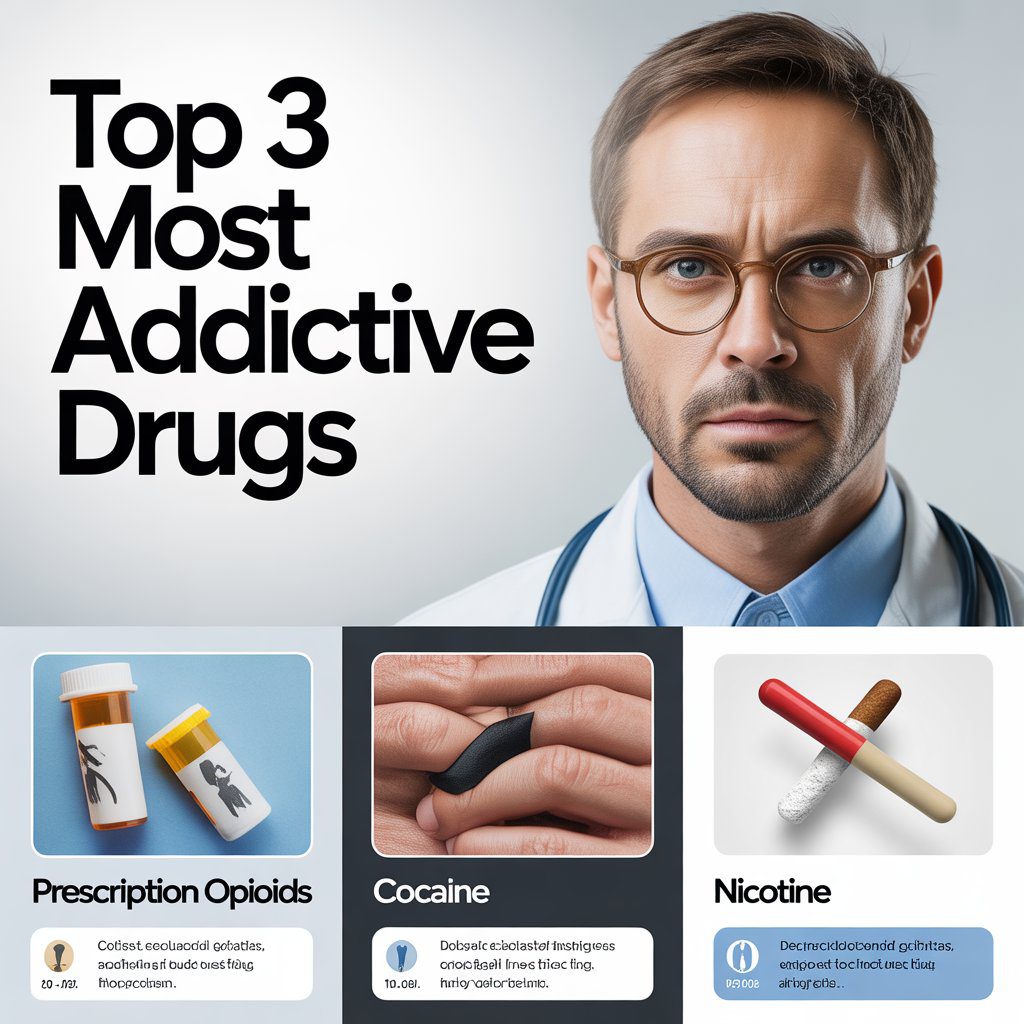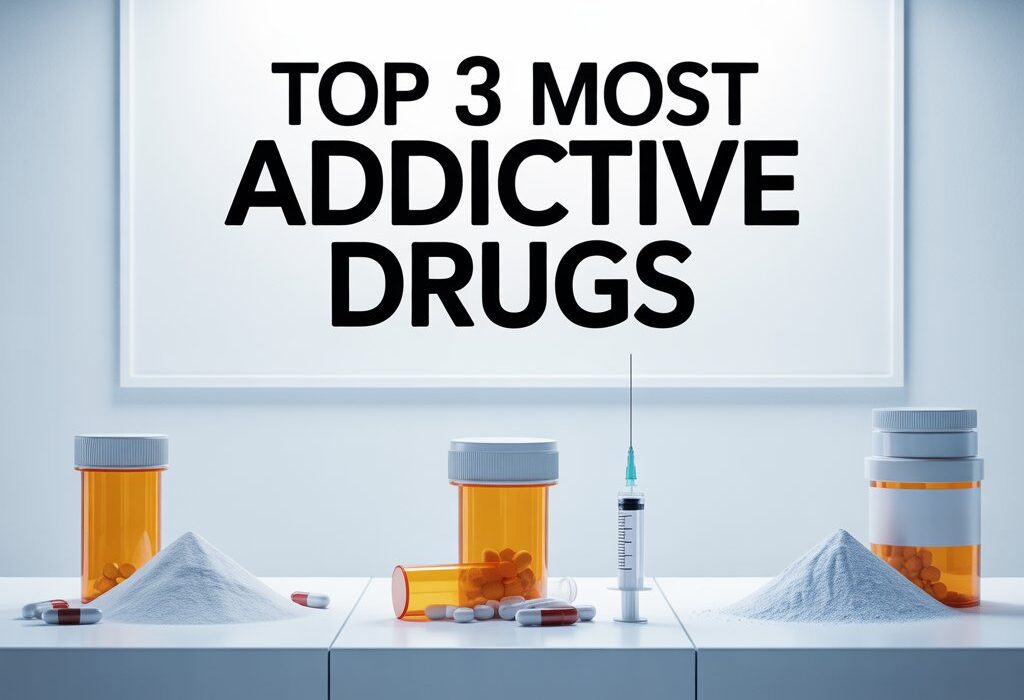Understanding the Top 3 Most Addictive Drugs
In the complex landscape of substance abuse, the question of which drugs are the most potent often arises. Understanding the top 3 most addictive drugs is not about fostering fear, but about promoting crucial awareness. Addiction is a chronic brain disorder, and certain substances have a particularly powerful capacity to hijack the brain’s reward system, leading to a rapid and devastating cycle of dependence. By examining these substances based on their potential for dependence, the severity of withdrawal, and the impact on the brain, we can better comprehend the challenges of recovery and the importance of compassionate, evidence-based treatment. This knowledge is a vital tool for prevention, early intervention, and supporting those on a path to healing.
The grip of addiction varies from person to person, influenced by genetics, mental health, and environment. However, decades of scientific research have consistently pointed to a trio of substances that stand out for their profound and rapid ability to create dependency. These top 3 most addictive drugs are notorious for the speed with which they can alter brain chemistry, the intensity of their withdrawal symptoms, and the powerful psychological cravings they produce. Recognizing them is the first step in addressing the unique challenges they present.
1. Heroin: The Opioid Crisis Catalyst
Topping many lists for its sheer addictive potential is heroin, an illegal opioid. Heroin’s power lies in its direct and rapid action on the brain. When used, it crosses the blood-brain barrier quickly and is converted into morphine, binding to opioid receptors responsible for perceiving pleasure and pain. This triggers an intense rush of euphoria. The brain, overwhelmed by this artificial reward, significantly reduces its own production of endorphins, the body’s natural “feel-good” chemicals. Consequently, the individual becomes physically dependent on heroin just to feel normal.
The withdrawal from heroin is famously severe, which is a key reason it is considered one of the top 3 most addictive drugs. Symptoms can begin within hours of the last dose and include intense muscle and bone pain, vomiting, diarrhea, insomnia, and severe cravings. This painful cycle often traps users, as they continue taking the drug not to get high, but simply to avoid the agony of withdrawal. The risk of fatal overdose is ever-present, especially with the rising prevalence of fentanyl-laced street drugs.
2. Nicotine: The Legal and Accessible Threat
Often underestimated due to its legal status and widespread availability, nicotine is a profoundly addictive substance found in tobacco products. Its inclusion among the top 3 most addictive drugs may surprise some, but its ability to create dependence is remarkably high. Nicotine acts as a stimulant by binding to receptors in the brain, which leads to the release of neurotransmitters like dopamine. This reinforces the behavior of smoking, creating a powerful link between the act and the reward.
What makes nicotine so insidious is the speed and routine of its delivery. Smokers often consume multiple cigarettes per day, each one reinforcing the habit. The withdrawal symptoms, while not as visibly dramatic as heroin’s, are potent and persistent. They include intense irritability, anxiety, difficulty concentrating, and strong cravings. Furthermore, the social and behavioral rituals associated with smoking—like having a cigarette with coffee or after a meal—create deep psychological triggers that make quitting exceptionally difficult, even for those who are highly motivated.

3. Cocaine and Crack Cocaine: The Powerful Stimulants
Completing this formidable trio is cocaine, particularly in its smoked form, crack cocaine. Cocaine is a powerful central nervous system stimulant that works by preventing the reabsorption of dopamine in the brain. This results in a massive accumulation of dopamine in the synapses, producing a short-lived but incredibly intense euphoria and a surge of energy. The crash that follows is equally powerful, marked by depression, fatigue, and irritability, driving the user to seek another dose to regain the high.
Crack cocaine, due to its method of administration, presents an even greater risk. Smoking allows the drug to reach the brain in seconds, producing a more immediate and intense—though even shorter—high. This rapid cycle of peak and crash powerfully reinforces addictive behavior, leading to binge use. The psychological addiction to cocaine and crack is exceptionally strong, as the memory of the euphoria and the desire to escape the subsequent crash can dominate a person’s thoughts and behavior, making it a clear contender for the list of the top 3 most addictive drugs.
A Note on Alcohol and Other Substances
It is important to acknowledge that other substances, like alcohol and methamphetamine, also have extremely high addictive potential. Alcohol, in particular, is widely abused and can cause severe physical dependence and life-threatening withdrawal. However, the trio of heroin, nicotine, and cocaine/crack are consistently highlighted for the combined power of their physical and psychological grip, the speed of addiction onset, and the challenges associated with achieving and maintaining abstinence.
Hope and Healing Are Possible
Understanding the potency of these substances underscores a critical point: addiction is a medical condition, not a moral failing. The brain changes caused by these drugs are significant, but they are not irreversible. Recovery is a challenging journey, but with comprehensive treatment that may include medical detox, behavioral therapy, medication-assisted treatment (for opioids and nicotine), and strong support systems, it is entirely achievable. If you or someone you love is struggling with addiction to any of these substances, know that seeking help is a sign of strength. Professional care can provide the tools and support needed to heal the brain, rebuild a life, and find lasting recovery.
Frequently Asked Questions (FAQs)
1. Why is nicotine considered so addictive when it’s legal?
Legality does not determine a drug’s addictive potential. Nicotine is highly addictive because it rapidly alters brain chemistry by increasing dopamine. Its legal status and the habitual nature of smoking (e.g., with coffee) create powerful psychological and social triggers that reinforce the addiction, making it very difficult to quit.
2. Can you get addicted after using a drug just once?
While full-blown addiction typically develops with repeated use, some drugs like crack cocaine or methamphetamine can create intense psychological cravings after a single use. The initial powerful reward can compel a person to seek the drug again very quickly, starting the cycle of addiction.
3. What makes withdrawal from heroin so difficult?
Heroin withdrawal is physically severe because the body has become dependent on the drug to function normally. When the drug is removed, the body goes into a state of shock, leading to intense flu-like symptoms, pain, anxiety, and insomnia. The desire to escape this misery is a major driver of continued use and relapse.
4. Is one of these drugs more dangerous than the others?
“Danger” can be measured in different ways. Heroin has a high immediate risk of fatal overdose. Nicotine is a leading cause of long-term, preventable death through diseases like cancer and emphysema. Cocaine carries a high risk of sudden cardiac arrest and stroke. All are extremely dangerous to a person’s health and well-being.
5. If these drugs are so addictive, is recovery even possible?
Yes, recovery is absolutely possible. Addiction is a treatable medical condition. While the journey is challenging, evidence-based treatments like medical detox, behavioral therapy, support groups, and medications can help individuals manage withdrawal, address cravings, and build a healthy, substance-free life.



